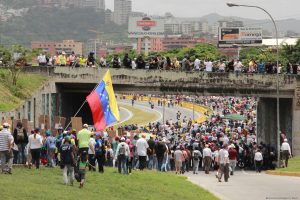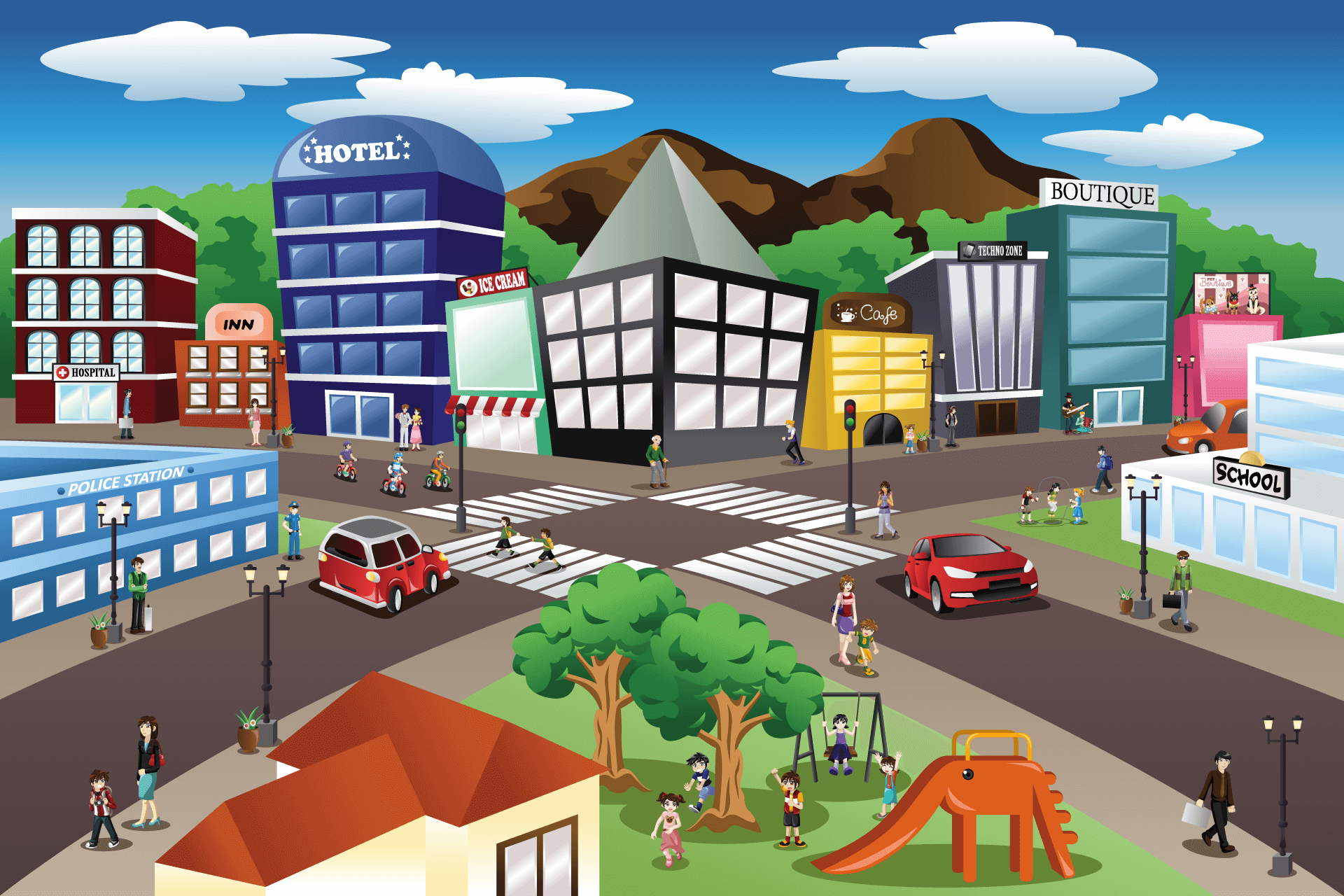
Read more
Blog, Migration Governance
Venezuelans are the first nationality of asylum seekers worldwide, but South American countries do not recognise them as refugees. Why?
Both the UNHCR and IOM have labelled the current Venezuelan emigration as a ‘staggering exodus’. More than 4 million people have left the country since 2015. This happened as question marks are being raised...
On 8th December 2018, two days before the UN Intergovernmental Conference to Adopt the Global Compact for Safe, Orderly and Regular Migration, some 80 cities around the world convened in Marrakech for the 5th Mayoral Forum on Human Mobility, Migration and Development. The cities signed a Mayors’ Declaration, identifying common priorities in the follow up and review process of the Global Compact. On that same occasion, a new initiative called the Mayors Migration Council was launched, to support cities’ engagement in international deliberations and policies concerning refugees and migrants. A couple of months afterwards, on February 9th, 2019, the mayors of the main Spanish and Italian cities launched an alliance to oppose the ‘closed harbours’ policy of the Italian Minister of the Interior Matteo Salvini and to denounce the incapacity of the EU to address the situation appropriately.
These are just two recent examples that show how city policies and mobilisation on migration can resonate well beyond municipal and national walls. Can cities’ international mobilisation rescue states (and the EU) from their failure in dealing with migration issues? Cities’ enthusiasts like Benjamin Barber, founder of the Global Parliament of Mayors, have no doubts about the governance capacity of city networks (CN henceforth): ‘Mayors can rule the world because cities represent a level of governance sufficiently local to demand pragmatism and efficiency in problem solving but sufficiently networked to be able to fashion cooperative solutions to the interdependent challenges they face’. Pragmatism and cooperative interaction are presented as the key assets of mayors, cities and, by extension, city networks’ mode of governing global challenges. On the basis of – the still scarce – existing research on city global mobilisation on migration-related issues and of the preliminary results of the MinMUS Project, we can identify the promises and challenges of transnational city networks for the building of a new multilevel governance of international migration.
Is local policy more pragmatic?
The idea that local governments must deal with the situation ‘as it is’, therefore taking distance from abstract – and presumably ineffective – ideological recipes, has underpinned the development of research on local migration policy. However, evidence is contradictory and, especially in the US, studies seem to show that pragmatic attitudes and accommodative solutions are just as likely to occur as decisions aiming at excluding migrants or simply ignoring the issue altogether. What a ‘pragmatic solution’ is cannot be easily established a priori, but will depend on policymakers’ interests, perceptions, and definitions of the situation.
Data collected by the Cities of Refuge project on 27 transnational city networks in Europe show that the most networked cities are leaning towards the centre-left, progressive-side of the political spectrum. And even if membership usually outlasts political shifts, this might not correspond to active participation, as pointed out by research in the field of climate change mitigation. Furthermore, according to Cities of Refuge, cities that adhere to international networks have an average population of 1.5 million, meaning that they are primarily large cities. However, as noted by OECD, while nearly two-thirds of migrants settle in metropolitan and densely populated regions, asylum seekers are more spread across urban-rural areas.
Territorial dispersal of asylum seekers reflects evidence on reception policies collected by the CeasEVAL Project. To face the sense of pressure generated by increasing inflows since 2011, national governments in both federal/regional countries (Germany, Italy and Spain) and centralised ones (Finland, Luxemburg, Greece and Bulgaria), have redistributed asylum seekers all over their territory, including small municipalities in rural and mountains areas. Even though the reaction of local populations has not necessarily been negative, CeasEVAL points out a high level of heterogeneity in the type of accommodation and quality of services provided, as well as in opportunities for effective integration. Policy learning and exchange of best practices would probably be of great interest to these ‘new immigrant destinations’; however, they often do not have the financial, human and political resources required to participate in international network activities.
Hence, the international arena is a highly selective one, which risks excluding those – especially small – cities that might be more in need of accessing knowledge and other – mainly financial – resources in order to deal effectively with the challenges of migration and asylum. Modes of inclusion will also depend on the goals of city networks, which are extremely diverse.
Cities as key players in the multilevel governance of migration?
City networks gather together on a voluntary basis local authorities in order to pursue perceived collective interests or purposes. They lack authoritative power, and therefore have to rely upon horizontal coordination and mutual cooperation to carry out and implement their initiatives. As such, city networks are organisations which aim at realising quintessential multilevel governance policy processes: on the vertical dimension, they interact with institutions operating at different – local, regional, national and supra-national – territorial scales; on the horizontal dimension city networks establish new relations between cities and with non-public actors mobilised at a city level.
To assess these hypotheses, the MInMUS project (website) has carried out an in-depth analysis of four transnational networks on migration, i.e.: the Migration and Integration Working Group of Eurocities, the European Coalition of Cities Against Racism (ECCAR), the Intercultural Cities Programme (ICC) and Welcoming America. Results show that these networks: 1) pursue different agendas and 2) are engaged in different types of policymaking processes.
Regarding agendas, ECCAR and ICC are focused on the promotion of a specific type of local policy, i.e. anti-discrimination and interculture respectively; Eurocities seeks to represent main cities vis-á-vis the European Commission, being involved primarily in lobbying activities; whereas Welcoming America is concerned with soliciting grassroots participation and community partnerships. As for policymaking processes, Welcoming America prioritizes relations with actors such as NGOs, CSOs and private business, whereas Eurocities is more focused on relations with the European Commission and national governments. A more balanced pattern of multilevel political dynamics can be discerned in the other two cases. In particular ICC, starting from 2016, has adopted an explicit multilevel governance approach aimed at promoting cooperation and coordination both on the vertical, i.e. between different levels of government, and on the horizontal, i.e. with non-public actors, dimensions of policy-making.
Multilevel governance, far from being the essence of city networking initiatives, is only one possible mode of policymaking interactions and it is not even the most relevant one. City networks may well find it more convenient or appropriate to pursue other types of policy interactions, centred on a vertical dimension as in the case of Eurocities or on the horizontal dimension as in that of Welcoming America. Multilevel governance seems easier to pursue in the case of networks that are already established as multilevel organisations. This is the case of ECCAR, launched by Unesco in 2004, and of ICC, officially started in 2008 as a joint initiative of the Council of Europe and the European Commission. Patterns of relations and modes of policymaking seem to reflect to a large extent the genesis of city networks and their distinctive policy agenda.
Getting back to our initial question: Can cities’ international mobilisation rescue states (and the EU) from their failure in dealing with migration issues? While one cannot deny the key role played by cities in the managing of migration crises as well as in supporting integration and community cohesion more generally, city networks’ skewed membership that consists mainly of larger and politically progressive cities should make us cautious about their impact on improving migrants’ living conditions at a grassroots level. Furthermore, evidence suggests that the initiative of supranational institutions ‘from above’ has played a key role in favouring cities’ collaboration around specific policy issues such as interculture and anti-discrimination. Indeed, cities and their networks represent a new actor in the multilevel political dynamics around migration; yet whether and to what extent they will be effective in promoting collaborative multilevel governance relations and influencing national government and EU agendas on migration remains to be seen.
Tiziana Caponio, Associate Professor of Political Science, is currently Marie Curie Research Fellow at the Migration Policy Centre (MPC). http://www.migrationpolicycentre.eu/team/tiziana-caponio/
The EUI, RSCAS and MPC are not responsible for the opinion expressed by the author(s). Furthermore, the views expressed in this publication cannot in any circumstances be regarded as the official position of the European Union.

